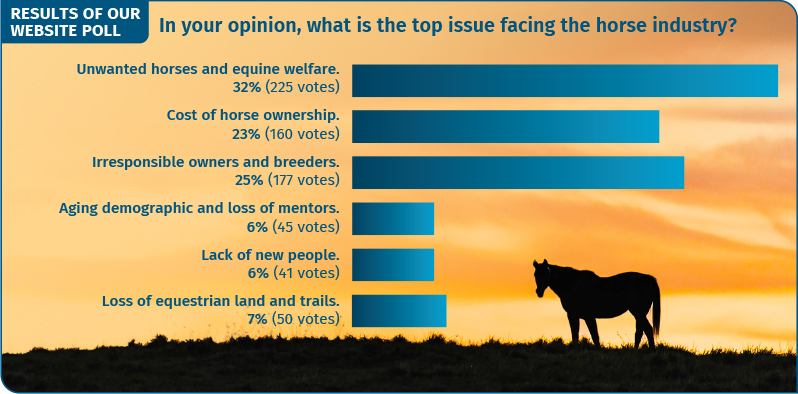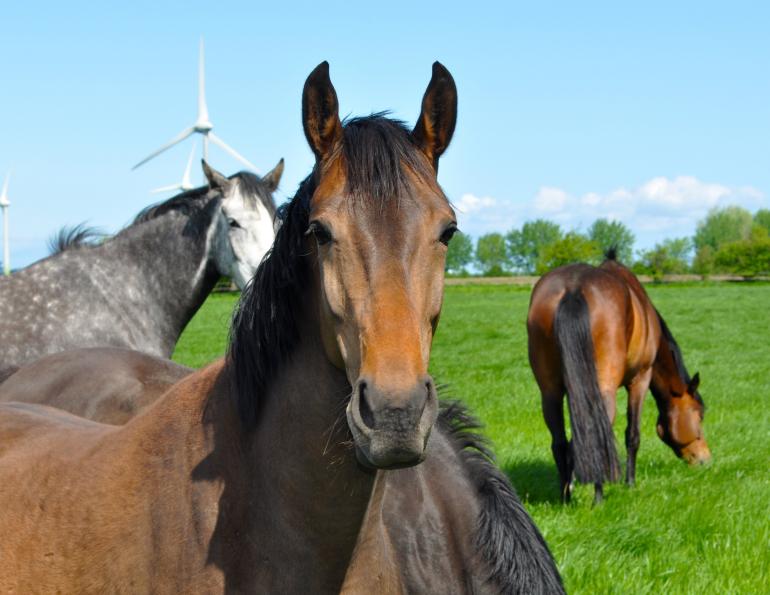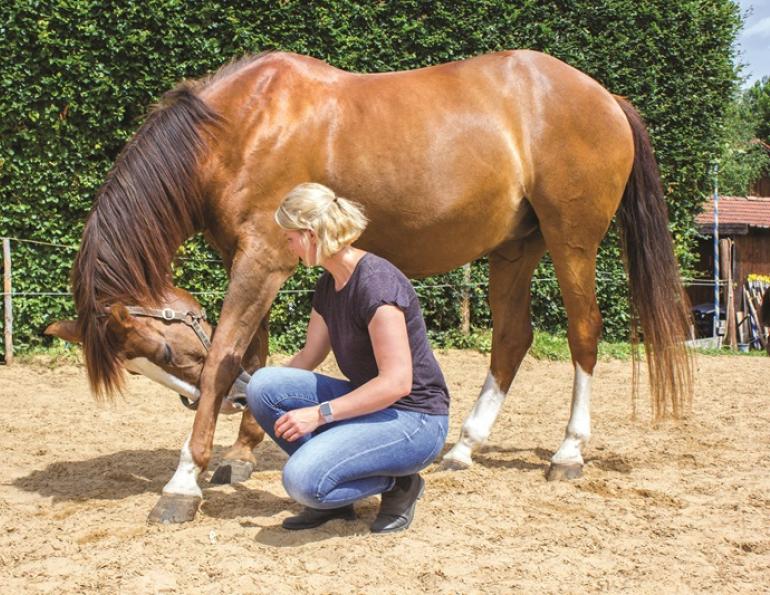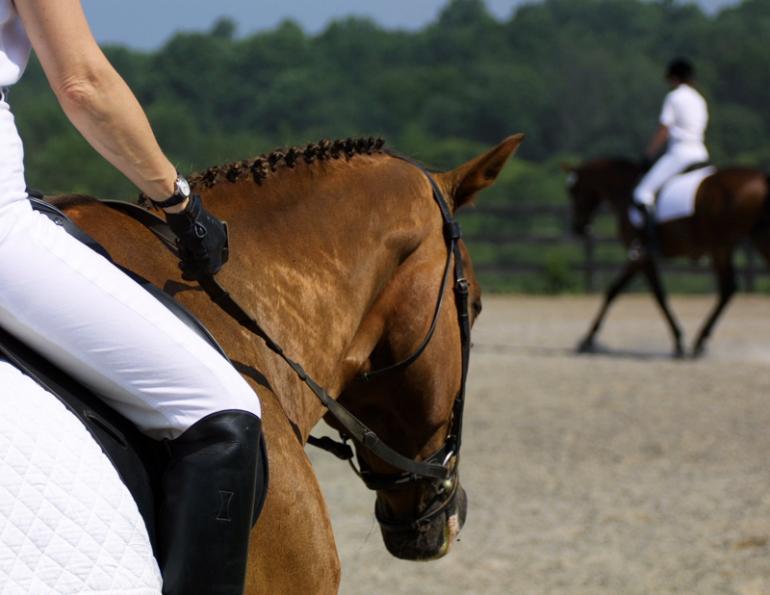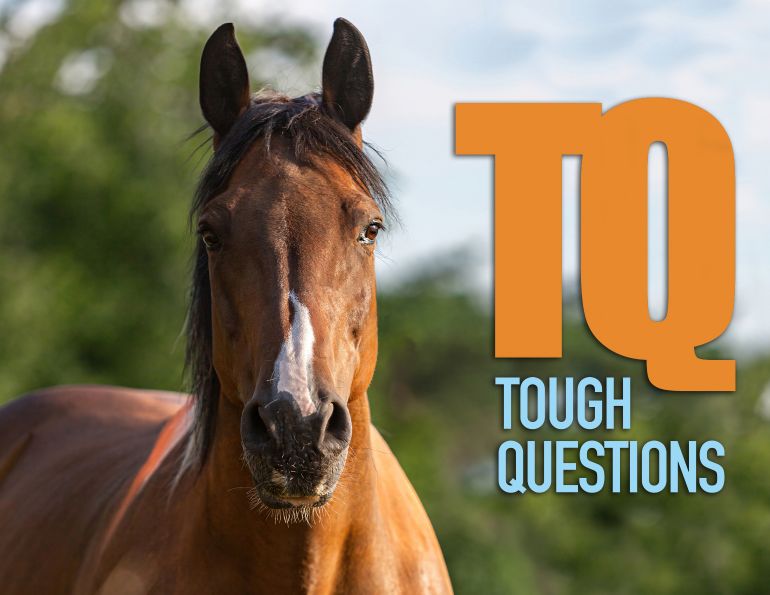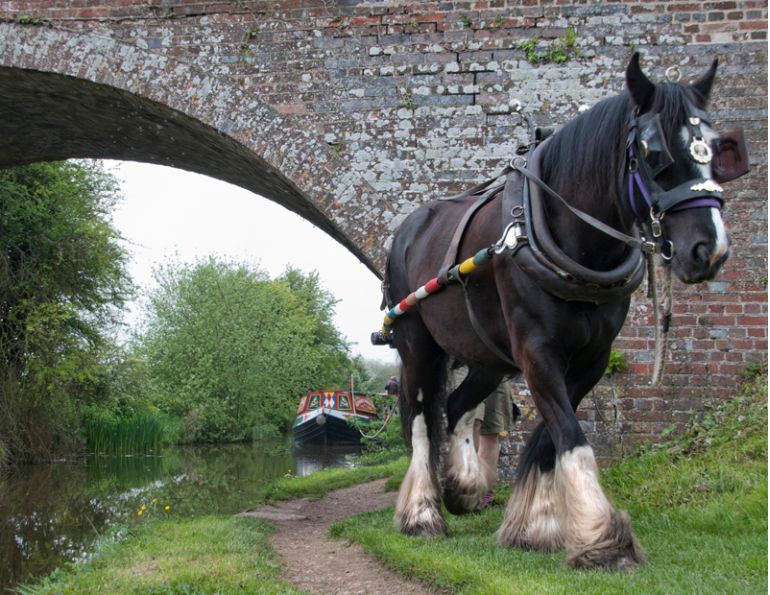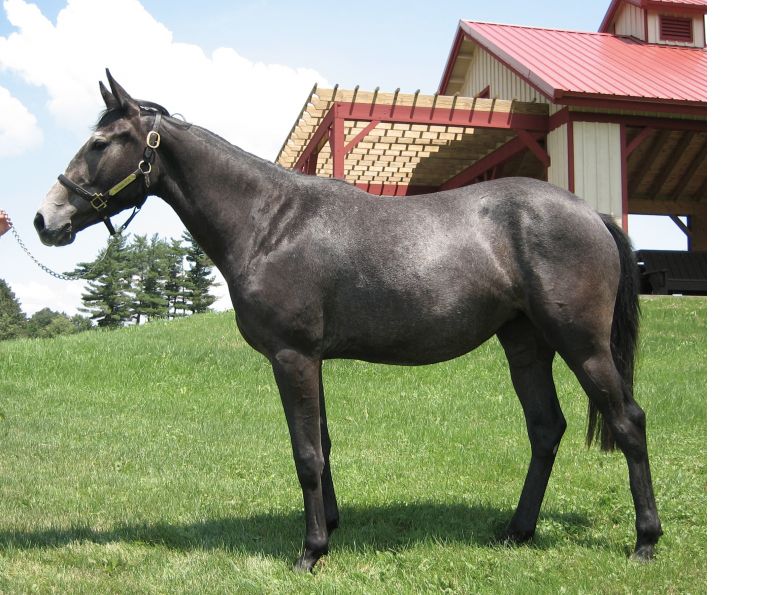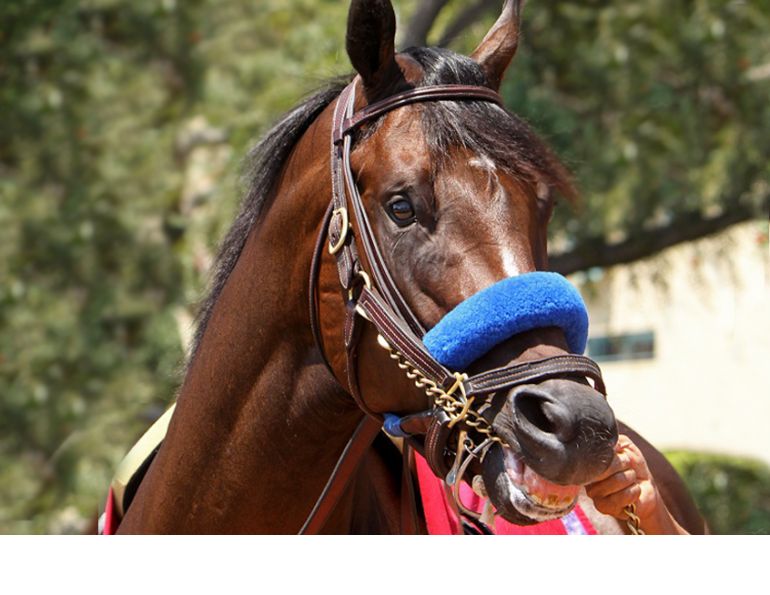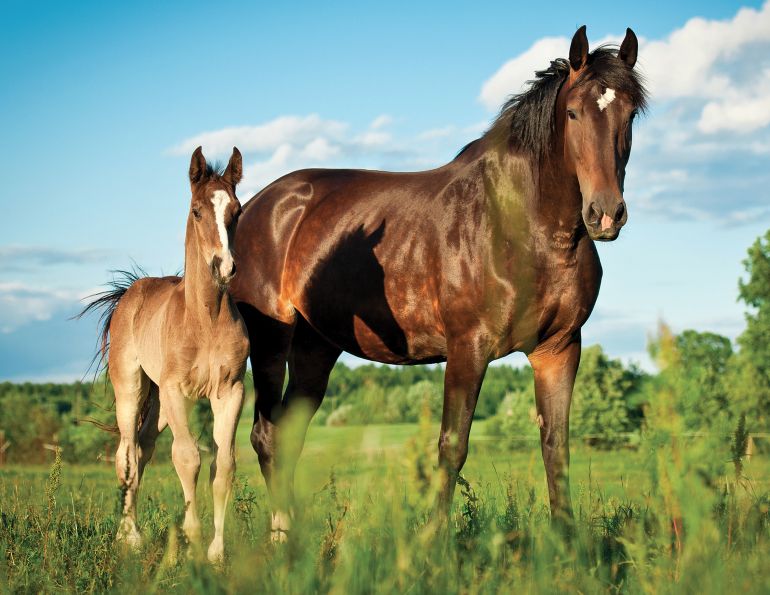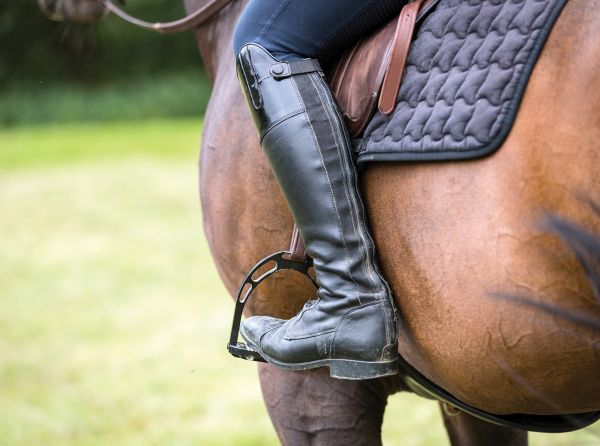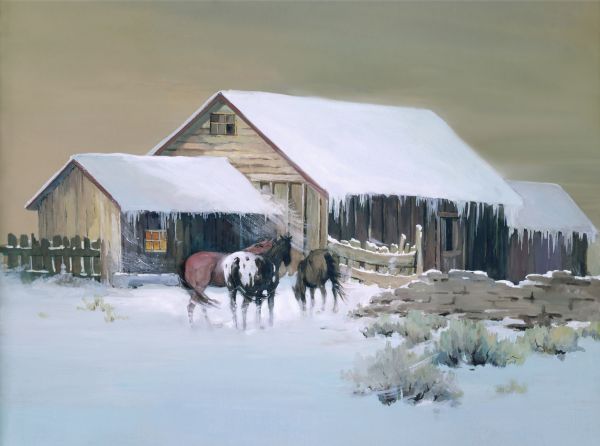In the spring of 2023, we asked you "What are the top three issues facing the horse industry in Canada."
Thank you to all who responded. Here is what our community had to say:
Kim Leffley, Salisbury, NB
1. The continued focus of the national equestrian governing body, Equestrian Canada (EC), on high performance equestrianism and the perception of elitism it portrays to the general public discourages inquiry and potential entry into the sport.
2. The lack of cooperative strategic partnerships between EC and other credible equestrian organizations leads to competition for beginner equestrians’ attention and dollars, and redundancies in programming that could be much more streamlined and cost-effective.
3. A cultural disposition toward sport for the sole purpose of achievement rather than competence and enjoyment, and immediate gratification for least effort, which does not translate well to horse sport where taking the time to build solid skills and relationships are the keys to long-term success.
Proposed solutions:
- Use resources to market entry level equestrianism as approachable to not only the existing horse community but to new, non-traditional markets (rather than just featuring high performance information and successes in magazines and promotional literature). It’s not all about gold medals in jumping!
- Form working relationships with organizations already offering solid entry level programming to broaden the reach of awareness of equestrianism as a viable sport, and to create a functional and logical path that values everyone from the recreational to the performance-minded rider.
- Encourage visible representatives of the sport to endorse the value of pace, skills development, and “not taking the easy path of buying your way” in pursuit of success.
Answering this question forced me to take time and really consider all of the possible factors that influence equestrianism (and there are many), but the one thing that kept striking me is our focus on the word “success” as the reason for all involvement, and how it drives the decisions being made in this arena.
“Success” is a very subjective term. Regardless how you measure it, it implies achievement and mastery of a given set of skills or values. We have, however, become a sport, an industry, and a culture which defines success in terms of accolades, prizes, and ribbons — where many must “lose” for a few to win. It says that to achieve the pinnacle, the podium of whatever we are doing is the only purpose in doing it. We have begun to assess our worth and the worth of our efforts on being “the best” rather than being “our best.” We turn every effort into an ultimate end result of either win or lose, rather than a progression of successive gains or small victories that lead to increased competence and enjoyment for its own sake.
Although competitive achievement (whether in the equestrian field or in day-to-day life and career) should be valued, recognized, and applauded, I do not feel that it is the defining measure of success. True success is evidenced in a person’s commitment to the decisions they have made, to accomplishing the goals they have set (no matter how small or large) and to those they will interact with while achieving them, and to their willingness to “give back” to those who have helped them along the way. It is demonstrated in the way a person values and deals with those around them — both human and animal — and handles the competitive nature of life with both its accomplishments and failures. THIS is being “our best.” It is how true success is embodied, and it values all who pursue it, allowing all who achieve these things to “win.”
If and when our culture rediscovers the value of this concept, I believe the way decisions are made and monies are allocated will change to become more visionary and inclusive. The value placed on equestrianism of all kinds, at all levels, will encourage more to become engaged and work with their equine partners to be “our best.”
This has been a discontent of mine for awhile now, so thank you for entertaining my tirade.
April Ray, Salt Spring Island, BC
1. Horse Welfare - I have been involved with horses for 35 years and have recently become aware of how much more educated we are on what is important to their health and happiness. When I was a kid, saddle fit wasn’t nearly the priority it is now. We put whatever saddle we had on a horse and expected it to perform and even treated them as misbehaving when they didn’t. Now we know how crucial proper saddle fit is, but for a long time horses had to suffer in silence in an ill-fitted saddle that was causing them pain and discomfort.
Horse people are slowly becoming aware that a lot of what used to be considered normal horse care is detrimental to our horses. Think about whisker trimming, mane pulling, improper saddle fit, restricting turnout, eliminating interaction with other horses, less-than-ideal feeding schedules, etc., all of which make our lives easier or better, not those of our horses. Many spend thousands of dollars on ulcer treatment but don’t change anything to ensure the ulcers don’t come back. More meals, less stress, more turnout, grazing, and interactions with other horses are all things that can not only improve your horse’s digestive system, but also improve their overall life experience.
As horse owners, we have an obligation to do the best we can until we know better, and then do better, putting our horses’ needs before our own.
Proposed solution
The solution starts with education. Luckily there is dedicated research that enlightens horse owners and benefits the well-being of the horses in our care. It needs to be backed up with rules and regulations. For many, it’s simply not enough to know why they shouldn’t do something if it’s rooted in their core beliefs about horse care. For example, since July of 2021, horses have not been permitted to compete in International Equestrian Federation (FEI) events if their “sensory hairs have been clipped and/or shaven or in any other way removed unless individual sensory hairs have been removed by a veterinarian to prevent pain or discomfort for the horse.” While this is only relevant for FEI level events, I hope there is a trickle-down effect to the lower levels until it becomes the norm across the board.
I would like to see the same thing happen for mane pulling, but from the conversations online, mane pulling will be tough to eradicate. Studies are limited on how much pain horses experience during mane pulling, and some people seem unwilling to believe they are harming their horse when pulling their mane. People can be hesitant to change if they’ve done something one way for a long time, especially if many of their peers continue to do it. I’m sure that eventually mane pulling will become a thing of the past, with many early adopters, me included, helping to spread the word that there is a better way to do things that causes less stress and pain to our horses.
2. Cost - Inflation is rampant right now, and in the horse world it’s out of control. Hay costs are sky rocketing, and the cost of feed and supplements is up. Labour costs have increased (if people can be found to work), and property prices in many areas of Canada are unobtainable for most. Costs of purchasing a horse have increased, and going to a horse show can equal what a lovely all-inclusive vacation might set you back. While these costs and many more continue to increase, the amount of money most people make working in the horse industry, or any industry, stays relatively the same. I worry for the survival of the horse industry because of the costs, and for the accessibility of horseback riding and horse ownership — something we desperately need if we do want to survive as an industry. It seems that soon it could be a rich man’s sport that only the elite can afford.
In Victoria, BC, we’ve seen many people sell their horse barns as their business is no longer sustainable or they’ve reached retirement age. We are losing willing barn owners faster than we are replacing them. It’s nearly impossible to make money on boarding, so having a farm means you need to have multiple revenue streams to support it — board, training, lessons, ring rentals, horse sales, whatever it takes to make more than you’re spending to keep the horses fed and the lights on.
For horse owners, these continuing increases might make us decide against buying another horse or even force us to get out of horse ownership altogether. Some horses will receive inadequate care simply because their owners can no longer afford it. The industry already produces many unwanted horses, and I fear for the fate of those horses and all the other horses that will be joining them due to rising costs.
Proposed Solution
I believe the solution starts with our provincial and territorial sports organizations (PTSOs) and our national body (EC) finding a way to support the horse industry through these challenging times. EC’s mandate is to represent, promote, and advance all equine and equestrian interests, and that should include more than just high-level horse shows and competition. It’s the backyard riders and beginners who are truly the foundation of our industry.
3. Bullying, Discrimination, and Abuse
Regardless of gender, bullying, discrimination and abuse seem all too frequent in the horse world. As a woman who grew up in that world, I have witnessed and experienced various levels of bullying, harassment, and even abuse from peers, coaches, and employers. I am not alone in this experience. It’s proven by the need for Safe Sport, put in place to protect the safety and welfare of all participants in equestrian sport, and is something that was largely ignored for a long time. In a sport that is expensive, there exists a certain amount of elitism, which makes it hard for the people already in it and downright daunting for those getting started.
I recently updated my coaching certificate and had to complete training on providing a safe, inclusive, welcoming environment to my students. Almost all the examples used to depict unacceptable behaviour were ones I have experienced or witnessed someone else experience in the horse industry.
The industry is dominated by women, and unfortunately societal norms have conditioned us to see each other as competitors rather than comrades. I think reversing those beliefs would be productive to solving this problem and creating a safer environment which is healthier, more inclusive, and empowering for everyone in the horse world.
Proposed Solution
Safe Sport and the work that EC is doing to foster a more inclusive environment is a great start. The rest is up to all horse people to no longer accept mistreatment on any level and call it out when we see it.
Jessica Kellner, Victoria, BC
1. Spiralling hay and feed prices - disproportionate, scammers, declining quality.
2. Accessibility of professionals: shortage of vets, farriers, tack repair people and other equine related qualified professionals, (e.g., a top surgeon in our country just retired).
3. Breakaway of base and reduced number of people getting into riding due to the cost and closure of riding schools. This will be one of the biggest threats for the future.
4. Labour availability and cost.
5. Shortage and availability of certain drugs and treatments.
6. Main market is in U.S. instead of Canada.
7. Draining of skilled professionals to Florida.
Louisa Taylor, Salt Spring Island, BC
1. Sport accessibility for all — not everyone who is or wants to be involved in horses wishes to show and compete. Some just wish to learn, develop, and have companionship. We need to do a better job as an equestrian community to make this a more accessible sport.
2. Affordability for those who do wish to compete. The fact that two days of showing can come in at well over $1,000 is simply not attainable or sustainable for a lot of people.
3. Labour rates for those involved in the industry — the fact that we still pay well below a living wage for people to care for our “family members” is astounding. You will retain quality educated staff if you pay appropriately.
4. Calling out the scammers of our industry, from hay brokers who sell sheer crap to unscrupulous horse brokers who scam daily. We need to be better about educating new people coming into the horse world, but also to hold those bad actors accountable. All too often (and I can raise my hand to being guilty) we say after the fact, Oh yeah, so-and-so is not someone I would buy a horse/tack/feed/coaching from. Rather than saying it after yet another person has been scammed, say it before — call it out!
5. Serviceably sound — We have fallen into the trap of looking for the unicorn of 100 percent soundness in a horse, but such a thing is as rare as a four-leaf clover. We need to normalize good vet work to keep a horse pain-free, comfortable, and useable. All too often we “throw the baby away with the bath water” once we hit one roadblock of soundness. We all know world-beating horses in great careers that have soundness issues and are what we class as serviceably sound. Of course, the Scott Brashs and Steffen Peters of the world can afford all the bells and whistles, but an amateur or hobby owner can do it as well with great vets and education.
Barb Bee, Victoria, BC
1. Saddle fitting. Thousands of wasted dollars with little or no success.
2. Increase in road traffic that doesn’t respect speed laws and horses.
Becky Wright, Victoria, BC
1. I feel sad that it’s gotten so expensive to keep a horse that there aren’t many school barns anymore. Having no new people is bad for everyone.
2. The insane cost increases of everything. It feels out of control (my wages have not increased to mirror this).
3. Lack of community. We have a “barn family” but that’s it. There is lots of support and encouragement for juniors (which I fully support) but the adult amateurs are super lacking.
Claudia Ellen Reh, Whitehorse YT
1. Low sugar hay suited for horses is not readily available, and there is not enough education about proper hoof care and trim.
2. No protection for horses that are living with neglect and abuse.
3. Not enough awareness about basic horse needs of living in a suitable herd and having room to move sufficiently.
Proposed solutions:
- Education needs to be free and offered through federal programs.
- Bylaws to protect horses and guarantee a basic good life need to be created. Now, horses can only be seized if they are dying. It’s dreadful!
- Farmers need to be incentivized to educate themselves on when to cut their hay so it’s low sugar but has sufficient protein.
- Education about social, emotional, and physical needs of the horse and their living situation is necessary.
Elaine Marsen, Aldergrove, BC
1. Abusive or unkind training, handling, and showing tactics. Not only is it wrong for the horses, it also gives fuel to activists who want to stop the use of horses for showing, etc. It gives ALL OF US a bad name.
2. Lack of education of the general public on the use of horses for riding and for competition and pleasure. We must let the public know about the kind and connective training methods used in working with horses, and how well they are taken care of. Perception of our industry in the public’s eye is very important.
3. Too many horses are living in severely unnatural conditions, which are detrimental to their well-being. Horses need room to move, to socialise, and to be amongst other horses. These conditions are harming horses and their ability to cope in our world and meet our demands. There are barns whose horses live in their stalls 23/7, coming out to work for only an hour. Or they may get turned out in a small paddock, but if they run around, they are brought back in for fear they will hurt themselves. We are looking at this wrong — horses need MORE turnout so that they are LESS likely to hurt themselves.
Proposed solutions:
- Education, education, education — of our judges, trainers, riders, everyone in the industry. Classic training without gadgets (e.g., tight nosebands, restraining devices, etc.), more horsemanship training (see Warwick Schiller, Jonathan Field, Steve Young, Tristan Tucker, Philip Karl, and others) throughout all disciplines.
- A public relations campaign. For the industry to survive we need the public on our side.
- We need to review and ENFORCE at least minimum requirements of space for horses. We need to educate horse people on the detriments of confinement and the benefits of horses being turned out and able to socialise with other horses.
Guylaine Bouffard, Gananoque, ON
1. Too many horses.
2. Owners not well-enough educated.
3. Assistance for boarding/riding equine facilities.
Proposed solutions:
- A mandatory course for becoming a horse owner.
- Federal and provincial support for equine facilities.
Kevan Garecki, Aldergrove, BC
1. Increase in unscrupulous representation within the professional/service provider community.
2. Diminishing presence of active mentorship, coupled with a significant number of elder participants aging out.
3. Rising costs impacting recreational owners, and an increase in numbers of surrendered horses.
Proposed solutions:
- Increased public awareness and education in recognition of ethics and best practices.
- Mentorship initiatives and programs matching mentors with potential students/learners.
- Government intervention in basic cost metrics: caps on resource industry profits (particularly fuel companies); public monitoring of resource sector tax exclusions and incentives.
Linda Viviers, Vernon, BC
1. Feed costs.
2. Veterinary costs.
3. People who know nothing about horses getting involved without educating themselves or their families about the things needed and the costs to keeping a horse or horses.
Proposed solutions:
- There will be no solutions until the cost of living and the price of hay, feed, etc. is stopped because only the rich will be able to do or get what they want.
Sharon MacDonald, Belleville, ON
1. Affordable boarding facilities for the average boarder. Barns in my area keep closing with very few new ones opening.
2. It may just be in my little part of the world, but there is a lack of new/young blood as represented by lifelong riders and workers.
3. Horse meat industry and slaughter, including shipping of live horses overseas. Most citizens don’t like it and equestrians especially don’t like it.
Proposed solutions:
- Those barns in operation need monetary assistance (grants, tax breaks, employee benefits options).
- I have seen a number of youth initiatives through the various organizations, but they need champions, and local barns and barn managers are the front lines.
- Stop the slaughter and shipments overseas.
Sharon Pickthorne, Courtenay, BC
1. Cost of land.
2. Getting youth involved with horses.
3. Urban sprawl and rural shrinking.
Proposed solutions:
- Provincial sports organizations, government, and industry could design and fund programs to expose youth to the sport.
- Financial support could be given to non-profits that provide safe, sound school horses and use certified equine coaches and other professionals to give youth the exposure to many types of horse activities.
Jo-Anne Ward, Ottawa area, ON
1. Shutting down horse slaughter. They are NOT food.
2. Affordability of owning horses for their lifespans. This includes equine being doubled-taxed unfairly as both livestock and pets.
3. Legalities
Proposed solutions:
- I’m a strong believer in euthanasia. It is the only humane solution to end cruelty and suffering. No horse (healthy or sick) belongs in a feedlot/kiĺl pen.
